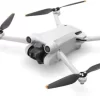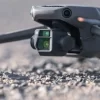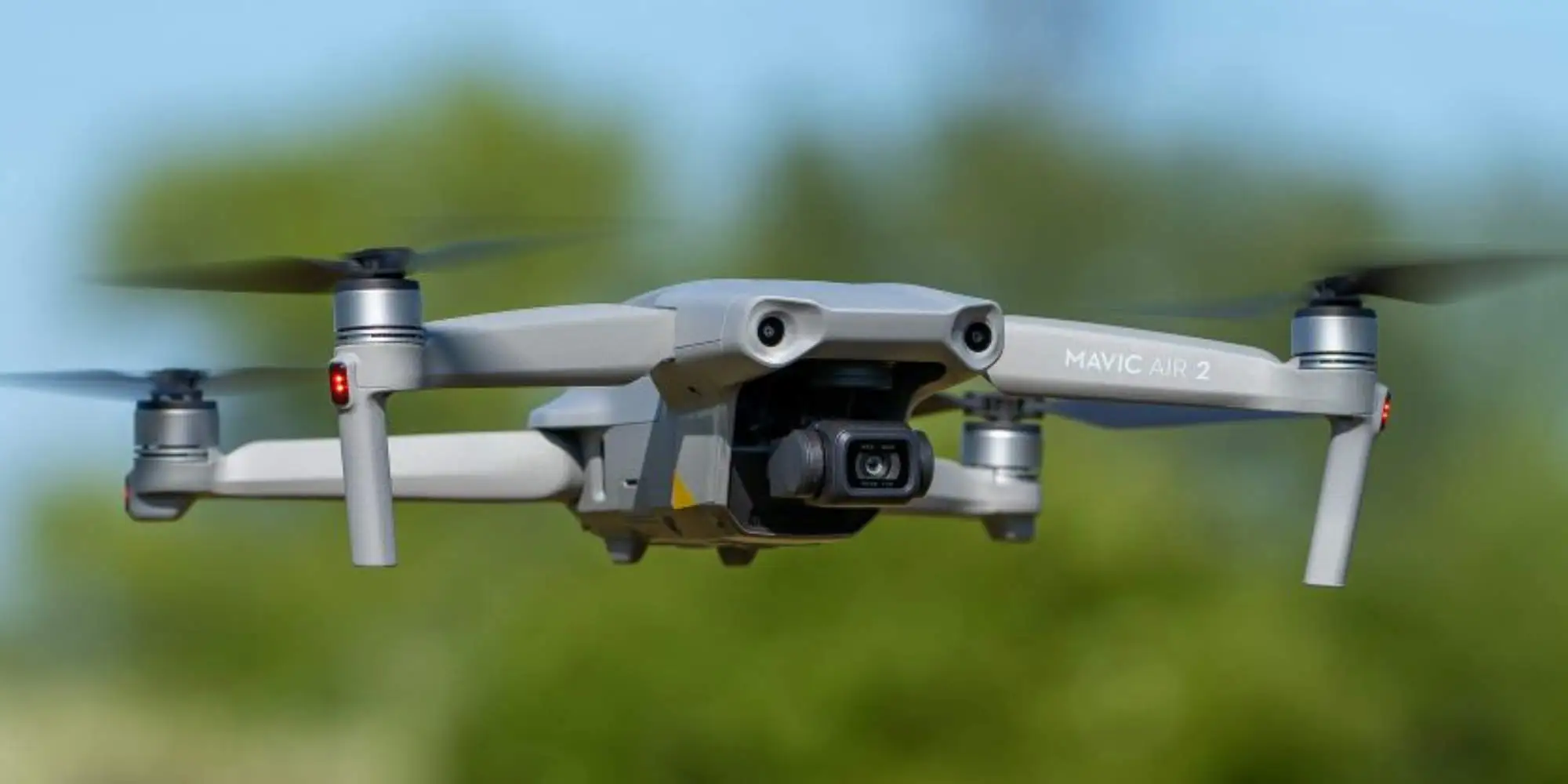
Humans have always strived for the impossible, and flying has always been a desire of many. Seeing the world from a bird's perspective has always fascinated people, and maybe that's exactly why drones have become so popular. Being able to take breathtaking footage of landscapes, monuments, or even your own house from the sky with just your fingertips, satisfies some instinctive need we can't fully explain.
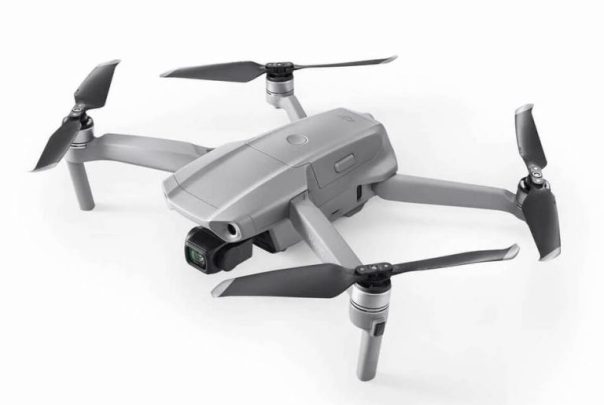
Specifications
| Dimensions | 3.3 by 3.8 by 7.1 inches |
| Weight | 570 g |
| Rotors | 4 |
| Obstacle Detection | Yes |
| Integrated Camera | Integrated with Gimbal |
| Video Resolution | 4K |
| Megapixels | 48 PM |
| Media Format | Internal, microSDXC |
| Remote | Dedicated with App |
Pros
- Superlative battery life
- Strong image and video quality
- Obstacle detection and avoidance
- Automated shots
Cons
- Video profiles limited to standard and flat
- App-based editing limited to 1080p output
- Remote omits EV control wheel
- Not easy to get Raw images to your tablet or smartphone
The best Mavic Air 2 deals
One of the most popular drones among enthusiasts is the Mavic Air 2. The Air 2 was a real game changer when it came out in April 2020 as it was the successor of the already popular Mavic Air, and everyone knew the Air 2 was probably going to be a success.
The Mavic Air 2 offers some serious upgrades to its predecessor, including much better battery life and new shooting features. DJI aimed to provide a drone with a fantastic camera that was easy to fly and offered advanced pilots something to play with.
Flying the Air 2 couldn’t be simpler. It is also the first consumer drone equipped with AirSense, DJI’s alert system that receives automatic dependant surveillance-broadcast signals from nearby aircraft and displays their location on the remote control’s screen.
The original Mavic Air came in a variety of colors, however, the Air 2 was made with the goal in mind of designing the best balance between size, portability, and features.
Did DJI manage to create one of the best drones on the market? Let’s find it out in the next few minutes.
Table of Content
Camera
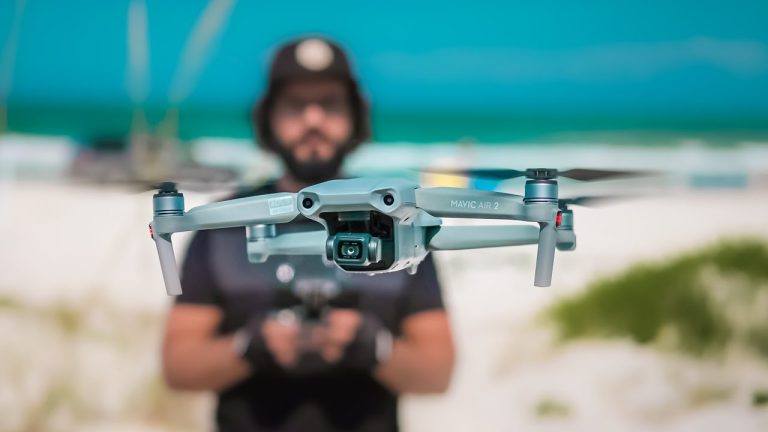
Photos
The camera is nothing special on paper.
DJI’s Air 2 is equipped with a ½ inch CMOS Quad Bayer sensor that captures Raw and JPEG images. The camera has a maximum resolution of 12MP with a 24mm fixed aperture F2.8 lens with an 84° field of view, which provides a significantly cleaner image at all ISO levels. Still, the noise is pretty noticeable at even ISO 100, so ISO 400 is realistically the highest setting you want to use.
Despite this limitation and the lens focus being set to hyperfocal distance, depth-of-field is big enough o keep close and even deep landscape scenes sharp throughout. Images are overall sharpest in the center of the frame, with a drop off in quality the closer you get to the image edges. This is a common issue with Maverics, but with the Air 2, sharpness improved a ton.
As with previous models, the Air 2 has a lot of functions for photographers to help them easily shoot better images. But, no matter how good these automatic modes are, it’ll always be the better choice to shoot raw and in manual mode, if you want the best photo.
However, if you’re a beginner and don’t know where to put your hands when it comes to photography, the Air 2 got you covered. HDR photos capture seven bracketed exposures, that are then merged in-camera to produce an image with detail from the shadows and lights. Then we have Hyperlight, a mode designed to shoot in low light and combine several images to reduce noise.
Another fantastic feature is the ability of the DJI Air 2 to take pictures at 48MP with the 12MP sensor. Although the ability to take photos at a higher resolution is a great tool, the 48MP pictures are created digitally in-camera as the Air 2’s sensor is 12MP, and the best results are much softer and crispier with the standard 12MP pictures.
DJI has increasingly been adding bits of computation photography to make shooting easier and require less work on your end. The latest effort is something that the drone company calls Smart Photo mode, which, once turned on, will analyze the scene, taking note of the surroundings and available light. Then the drone taps its machine intelligence and automatically chooses between various photo modes.
Videos
For videos, the Air 2 brings for the first time the 4K 60FPS format.
The 4K 60FPS was unseen even in the flagship Mavic models, as well as newer additions such as slow motion video up to 240 FPS at 1080p. Despite its size, the Mavic Air 2 offers some degree of professional video that is a delight to watch.
Videos can be captured in Standard format (the equivalent of JPEG) or in the more neutral D-Cinelike profile that has more detail in shadows and highlights. HDR video is available at 4K, 2.7K, and FHD at up to 30FPS. 4K is available at up to 4K, the same for 2.7K, and FHD up to 240FPS. Also, videos can be shot at a maximum bitrate of 120Mbps.
The bitrate makes a big difference, as the video footage in various lighting scenarios is incredible. The 60-frames-per-second 4K video is handy when shooting anything that’s fast-moving. A video with more frames serves as a better scene recorder and opens up more possibilities when editing.
Software
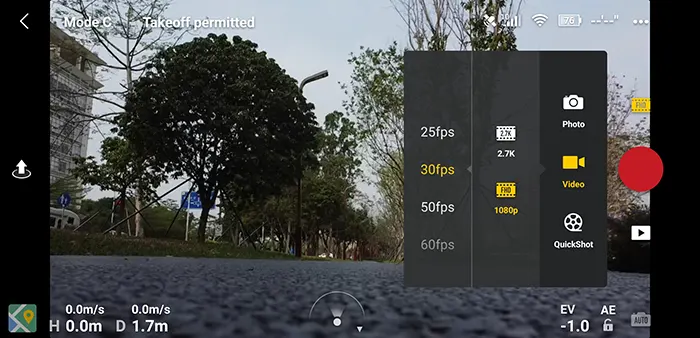
The Air 2 is equipped with all DJI drones’ standard DJI Fly app software. It’s a formidable software, especially for beginners, as it helps newcomers fly the drone easier, capture better images/videos, and share them on socials with a few buttons.
Gimbal
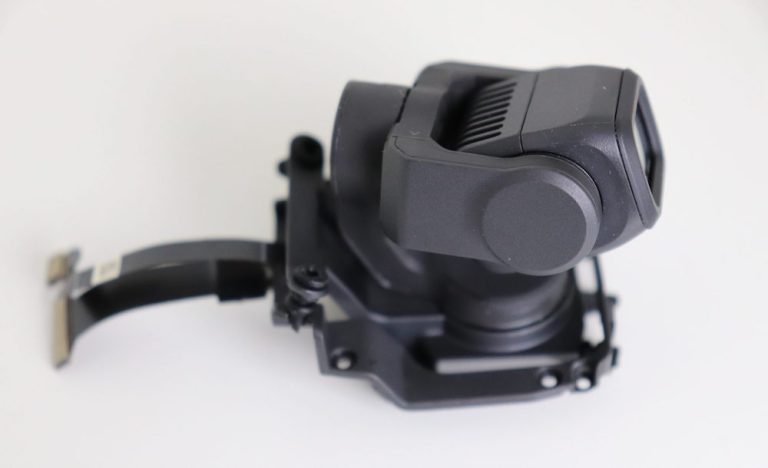
A 3-axis gimbal stabilizes the camera with a controllable tilt range of -90° – 24°, although the pan axis is unfortunately not controllable. A 3-axis gimbal means that any movement of shakiness is counteracted – resulting in smooth and sharp images and videos.
Design and Controller
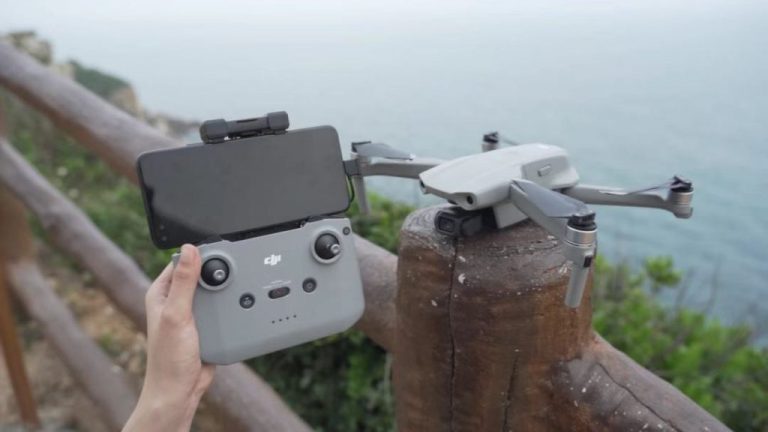
The Mavic Air 2 is slightly bigger than its predecessors, but you won’t really notice the difference too much.
The folding is compact, and at 5.8 kg (1.3 pounds), the drone is plenty portable. Fully loaded, it takes up to about as much room as a medium-size smartphone, and it fits nicely in most camera bags.
When folded, the Mavic 2 is 180x97x84 mm and easily fits in the palm of your hand, but the most significant physical change is in the design of the controller, which is much larger than what you’ll find in any of the other Mavics.
The new controller is also fantastic for mounting your phone up top rather than the bottom, which is much more comfortable, in our opinion. The smartphone is secured with a solid clamp, but securing your phone on the controller can sometimes be a hassle.
Similar to older DJI controllers, the Return to Home and Power buttons are on the front. Lastly, the upper-left button features an ‘Fn’ button that activates the auxiliary light to fly the Air 2 at night and an additional sensor with several functions, such as smoother landing in low-light conditions.
Flight and Stability
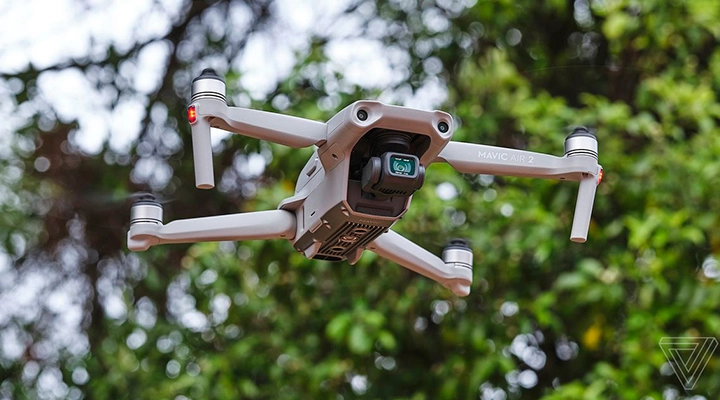
The Mavic Air 2 features new motors, new electronic speed controllers, and enhanced aerodynamics for a better overall flight experience.
You can fly the Air 2 pretty easily, whether you are a complete beginner or a pro drone pilot, thanks to the intelligent technologies DJI employed on this new machine. OcySync 2.0, for example, is a vastly superior method of transmission between the controlled and drone than the one used by the original Mavic Air.
OcuSync 2.0 also supports 2.4GHz and 5.8GHz frequencies and has a fantastic anti-interference technology that helps block most unwanted signals.
In terms of safety, you can be at peace of mind with the Air 2, as it provides obstacle sensors of the front and rear that help avoid most collisions if you were to be distracted during your flight. There are also sensors on the bottom of the drone alongside an auxiliary light to help with automatic landings.
DJI Air 2’s safety features don’t end here, as it also has GeoFencing, which will stop the drone from flying close to high-risk locations like airports, and APAS 3.0, which, when enabled, will reroute the drone when obstacles come into its path.
Beyond the safety improvements, the Mavic Air 2 has also inherited many advanced features from its predecessors such as FocusTrack, Hyperlapse, Circle, Courselock, WayPoints, and the popular Quickshot.
Range
Air 2’s range is undoubtedly one of its best tricks.
Range has expanded to over 9.5 km (6 miles), and although these distances are likely accurate, we don’t advise flying your drone almost 10 km away from you as it’s extremely easy to lose awareness of it.
Flight Speed
The flight speed is respectable on the DJI Air 2, with a maximum speed of 67.6 kph (42 mph) in Sport mode and wind resistance of up to 38 kph (24mph.)
Battery Life
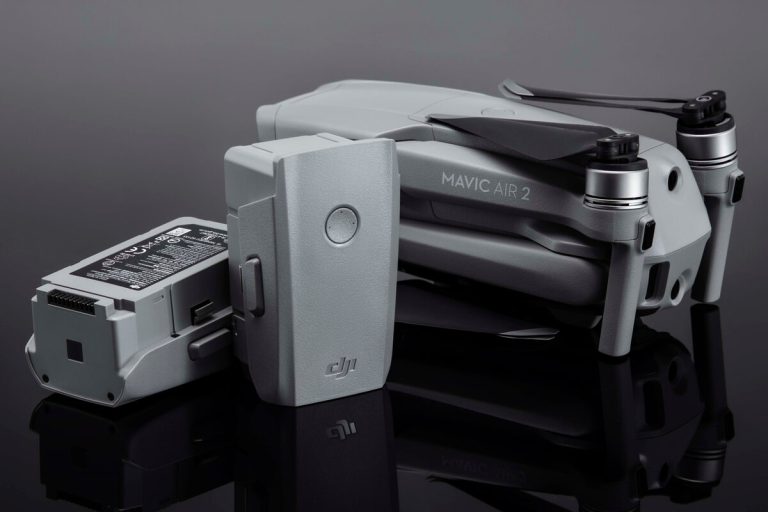
While the other improvements are welcome, one of our favorite additions to the Mavic Air 2 is the much-improved flight time. DJI claims 34 minutes as the maximum flight time in ideal conditions, but we doubt that will ever be a realistic possibility.
The most common flight time has been around 32 minutes for most users, which is still impressive, especially considering that its older cousin, the Maveric Air, struggled to fly over 20 minutes. The longer flight time means there’s less of a need to pack extra batteries, which only lightens the drone’s whole structure.
DJI Mavic Air 2 Fly More Combo
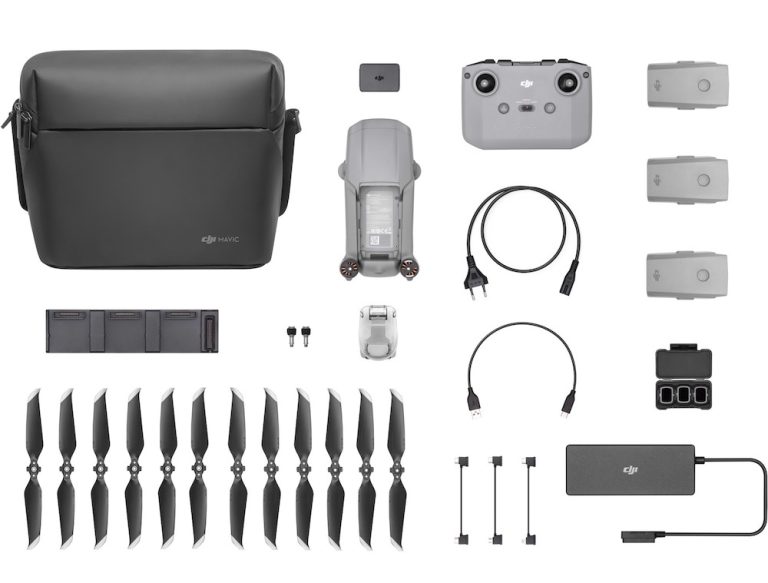
The Fly More Combo includes the same items as the standard package, plus a shoulder bag. This shoulder bag has Neutral Density filters, a charging hub, and two extra batteries at the cost of almost $300.
Considering Air 2’s flight time is around 32 minutes, the average consumer may not need two extra batteries, but if you use the drone heavily, the Fly More Combo may be a perfect fit.
Price
Available for $799 or with the Fly More Combo for $988, this drone is in the middle of the market regarding price, but considering its features, it’s a bargain.
The Air 2 offers a fantastic deal just for its camera, as you’d find this camera quality only in drones around the $1500 price range.
Alternatives
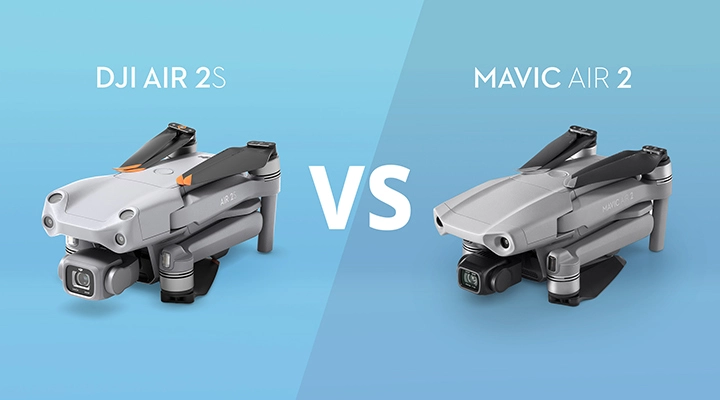
The competition for the Mavic Air 2 comes mainly from DJI themselves.
Air 2’s main competitors are the DJI Air 2S and the DJI Mini 2. You should get the Air 2S if you have a bigger budget and want a drone with a better camera overall. However, it’s also considerably heavier than the Mavic Air 2.
As for the Mini 2, it’s the best choice compared to the Air 2 solely from a price standpoint, as it starts at less than $500.
There are also other DJI options, but they’re primarily super high-end drones such as the Mavic 2 Zoom that offer top capabilities but nearly double the price.
Final Words
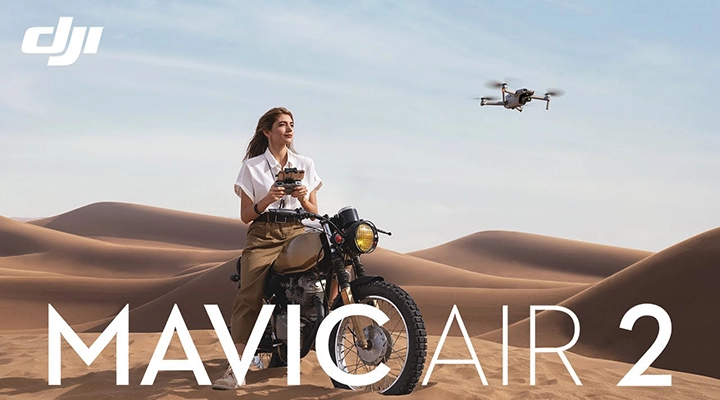
The Mavic Air 2 is fun to fly, small, and packed with fantastic camera quality. New and casual flyers will have a blast with this drone, especially because the fly app was designed to walk them through each step. On the other hand, professionals and serious enthusiasts who want more advanced features will probably stick with other models unless they want to experiment with something different.
Overall, the Mavic 2 is arguably the best all-rounder for non-professionals because it has a broader range of modes and it’s easy to fly.
At the moment, the Mavic 2 feels very much like DJI’s flagship drone. If you need a machine that flies well, offers 90 percent of what more expensive drone models provide, and costs less than $1000, the Mavic 2 is an impressive machine.
FAQ
”

